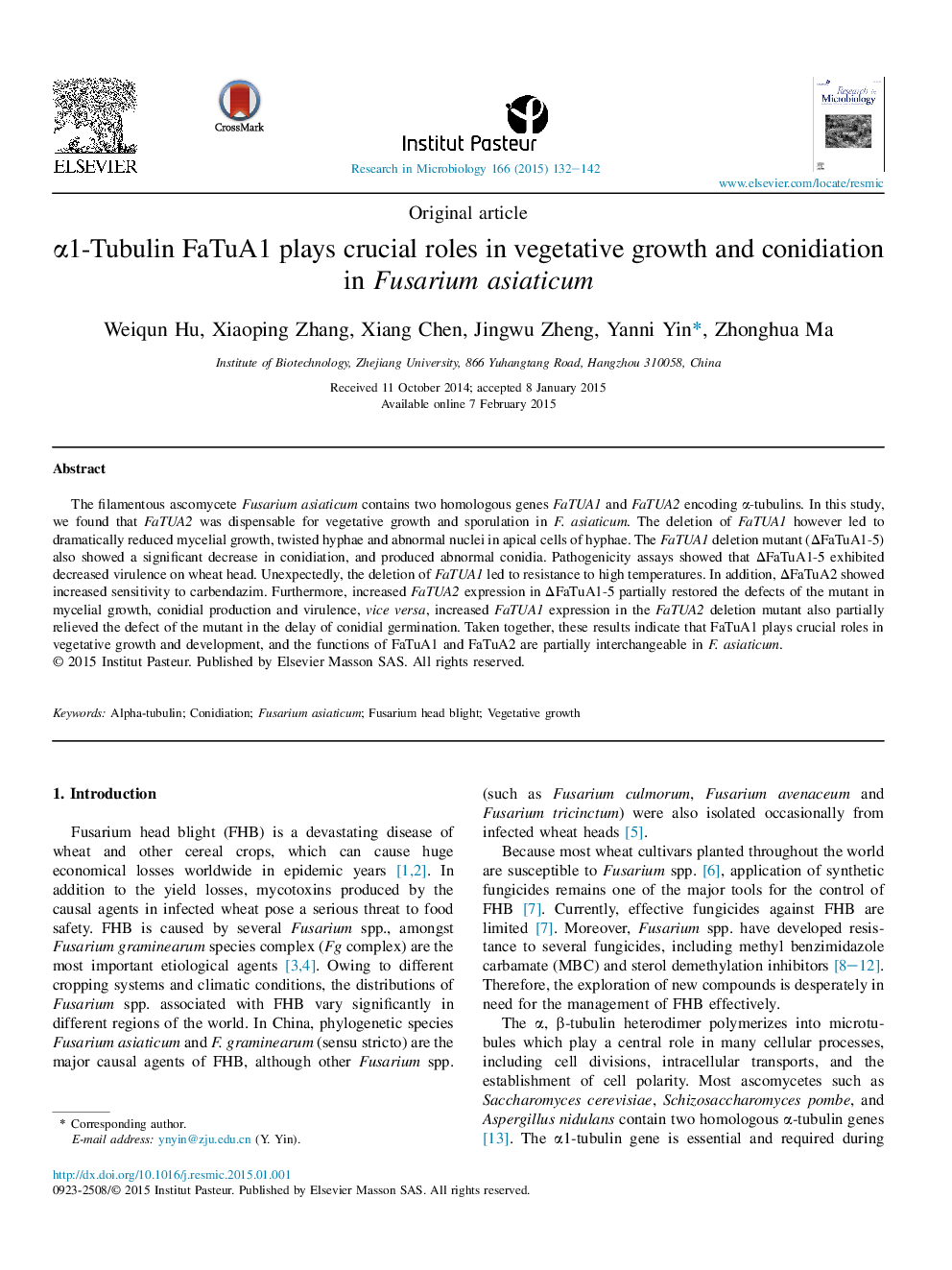| Article ID | Journal | Published Year | Pages | File Type |
|---|---|---|---|---|
| 4358547 | Research in Microbiology | 2015 | 11 Pages |
The filamentous ascomycete Fusarium asiaticum contains two homologous genes FaTUA1 and FaTUA2 encoding α-tubulins. In this study, we found that FaTUA2 was dispensable for vegetative growth and sporulation in F. asiaticum. The deletion of FaTUA1 however led to dramatically reduced mycelial growth, twisted hyphae and abnormal nuclei in apical cells of hyphae. The FaTUA1 deletion mutant (ΔFaTuA1-5) also showed a significant decrease in conidiation, and produced abnormal conidia. Pathogenicity assays showed that ΔFaTuA1-5 exhibited decreased virulence on wheat head. Unexpectedly, the deletion of FaTUA1 led to resistance to high temperatures. In addition, ΔFaTuA2 showed increased sensitivity to carbendazim. Furthermore, increased FaTUA2 expression in ΔFaTuA1-5 partially restored the defects of the mutant in mycelial growth, conidial production and virulence, vice versa, increased FaTUA1 expression in the FaTUA2 deletion mutant also partially relieved the defect of the mutant in the delay of conidial germination. Taken together, these results indicate that FaTuA1 plays crucial roles in vegetative growth and development, and the functions of FaTuA1 and FaTuA2 are partially interchangeable in F. asiaticum.
